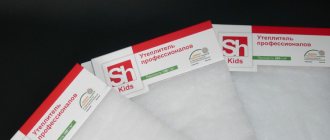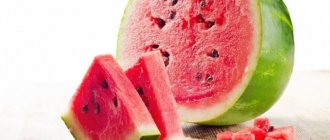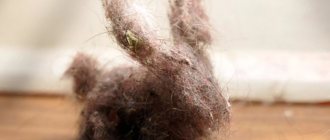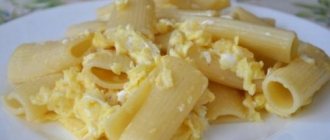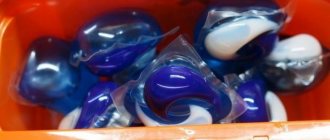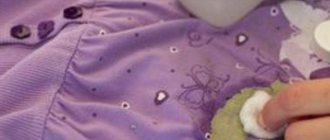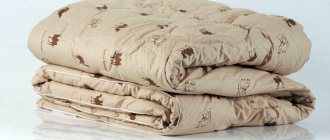Home / Fillers
Back
Published: 06/16/2021
Reading time: 3 min
0
0
The requirements for modern winter clothing are simple. It should be warm, yet weightless and comfortable. It would seem that these characteristics are difficult to combine in one coat or jacket. But with the latest synthetic material, such as isosoft insulation, everything is possible. Read more about its properties, what weather it is designed for, and how to care for it.
- 1 Production and characteristics of the material
- 2 Types of density and temperature conditions
- 3 Advantages and disadvantages
- 4 Caring for clothes with this filler
- 5 Reviews about product quality
- 6 Conclusion
Production and material characteristics
Isosoft insulation is an innovative non-woven product from the Belgian company Libeltex. The structure is twisted polyester threads. Sometimes they are so twisted that they look like microballs. Thanks to such a springy structure, the item fits the body, taking on its contours.
The outer layer of insulation consists of a two-layer silicone polymer coating. Thanks to the heat-sealed surface, the fibers do not move and cold air does not get under the clothes. The insulation has pores to evaporate excess moisture, thereby eliminating the “thermos effect”.
Main features of isosoft
Isosoft consists of tiny polyester fibers created in such a way that they are better able to retain heat. The fibers are separated by cavities, which also retain heat and ensure that the product retains its shape. Isosoft has a double-sided polymer coating, so the fibers do not spread, but stay in shape.
Many of us have more than once encountered a situation where insulation (for example, padding polyester or feather) “leaked” through the lining. This will not happen with clothes insulated with isosoft. Libeltex is currently in no hurry to reveal the secrets of this property. What is known is that Isosoft insulation is created exclusively from raw materials that fully meet all international quality standards. This confirms that the company has the necessary certificates for the production of materials. Libeltex tries to minimize the use of chemical additives in production.
Types of density and temperature conditions
To ensure that the isosoft filler has the widest possible scope of application, the manufacturer has created insulation options that differ in their density. Their main types, intended for certain weather conditions, are presented in the table below:
| Harsh winter | Late fall | Demi-season models |
| from 250 to 300 (g/m2) | from 100 to 160 (g/m2) | from 50 to 75 (g/m2) |
Isosoft insulation for clothing assumes a wide temperature range of use of about 40 degrees: ─30°C ... +10°C.
According to another classification, the following types of isosoft are distinguished:
- Category 103, which is based on the finest fibers. Differs in plasticity. The moisture-repellent composition protects the canvas on both sides. It can be 3─25 mm thick. Requires quilting.
- Modification marked 34. Based on siliconized hollow polyester threads. The material has a thickness of 4─15 mm. The insulation fibers are protected by polymer. No quilting required.
- Product 304 6─22 mm thick. Quilting is not necessary for jackets, but it is required for coats.
Isosoft 101 ─ material for insulating travel equipment and bedding. It is characterized by strong twisting of polyester fibers and elasticity.
Pros and cons of the filler, temperature conditions of use
Isosoft insulation has a lot of advantages. Outerwear with it is suitable even for the Far North. The material is breathable, soft and elastic, which prevents fibers from pilling. Products with such insulation are convenient because they are lightweight and thin. In addition, they do not deform after washing and dry quickly. The advantages of the material include hypoallergenicity and environmental friendliness. Isosoft is of synthetic origin and does not contain harmful substances; dust mites, fungi and bacteria do not grow in the insulation.
The disadvantage of insulation is its high price. For this reason, it is not used for mass production of workwear in Russia.
Things with isosoft can be worn in winter, spring and autumn, but the density of the fiber must be taken into account. What density of insulation is better to choose? Fibers with an index of up to 80 g/m2. m is used for sewing demi-season clothing (for temperatures above 0°C). Filler with a density of 80-150 g/sq. m is appropriate down to -10°C. Material with a density of up to 180 g/m2. m is suitable for temperatures not lower than -15°C. Insulation with an index of more than 200 g/sq.m. m will warm you up in 30-degree frost.
Advantages and disadvantages
First, about the advantages of the product. Isosoft insulation for clothing:
- allows air to pass through well, that is, “breathes”;
- excellent heat insulator;
- 5 times thinner compared to padding polyester;
- lightweight, therefore used in clothing for children;
- soft, elastic;
- hypoallergenic, does not create an environment favorable for the proliferation of pathogenic bacteria, fungi, and dust mites;
- wear-resistant;
- fibers do not “bleed” through the lining and main fabric. Thanks to this, isosoft combines well with many materials;
- dries quickly;
- Versatile, can be worn in any weather.
The advantages of isosoft have been duly appreciated by clothing manufacturers for both adults and children. Now you don’t have to dress your child in a heavy fur coat. Jackets and overalls with isosoft do not restrict movement. You can play sports in them without getting cold or sweating.
Isosoft has one minus - its high cost. It was this that became the reason for the low prevalence of high-quality insulation.
Advantages of isosoft
Isosoft insulation has a large number of important advantages compared to standard insulation. The outer layer helps retain heat and reliably protects against cold air getting inside. This leads to the formation of a greenhouse effect inside the clothing. However, you won’t have to sweat, since this insulation is also remarkable in that, thanks to the peculiarities of its structure, it is capable of allowing moisture to escape.
When comparing layers of insulation of different types of equal weight, one cannot help but notice that isosoft is four times thinner than synthetic winterizer. But this does not mean that it does not heat as well as padding polyester. On the contrary, isosoft warms much better than synthetic winterizer and other insulation materials, while being several times thinner than them. Due to its insignificant thickness, isosoft is widely used for insulating various types of children's and sportswear. If you wear clothes insulated with isosoft, then you will not be afraid of any, even the most severe frosts. At the same time, you will not resemble a clumsy “penguin”, since you will not need to wear several layers of warm clothing under your jacket. It is safe not only for adults, but also for children, including very young children.
The weight of isosoft is almost not felt, which again indicates that it is one of the highest quality insulation and fillers for winter clothing. You don’t have to worry that folded clothes will lose their former beautiful shape - for example, they will bunch up like padding polyester or fluff. This insulation can retain its original shape for many years, no matter what. Clothing insulated with isosoft can be washed as much as you like, but it will not lose its original shape.
Caring for clothes with this filler
The care rules are the simplest. They are described in detail on the label of the jacket, coat or overalls. A set of standard recommendations:
- A jacket insulated with isosoft should be washed separately from other clothes. This can be done many times, both in a machine and manually, but at temperatures up to 40°C.
- The use of bleaches, especially chlorine-containing ones, is contraindicated. Liquid detergents are recommended for their ability to quickly rinse out of the fiber structure.
- When washing by hand, avoid rubbing and twisting the products so as not to damage the insulation fibers.
- Rinse until clean.
- Soaking is not recommended.
- When washing automatically, select the “delicate” wash program without the “drying” function, but with an additional rinse.
- Spin at minimum speed.
- Dry by hanging vertically, away from direct heat. A well-ventilated room or balcony is suitable for this. Dry filler easily takes its original shape.
- If streaks appear, wash the jacket again, but without detergents.
- Dry cleaning possible.
- Ironing is not recommended.
Advice! When washing automatically, use a special bag or a clean pillowcase. If there are greasy stains, first treat the stains with a soap solution. Before use, it is advisable to test in an inconspicuous place.
Store rolled up. When untwisted, the shape of the products is quickly restored.
Author:
Zakharova Nina Afanasyevna
I hope you like my article! If you find any shortcomings, just write to me about it! I am always ready for a conversation and will answer any questions you have, ask them!
